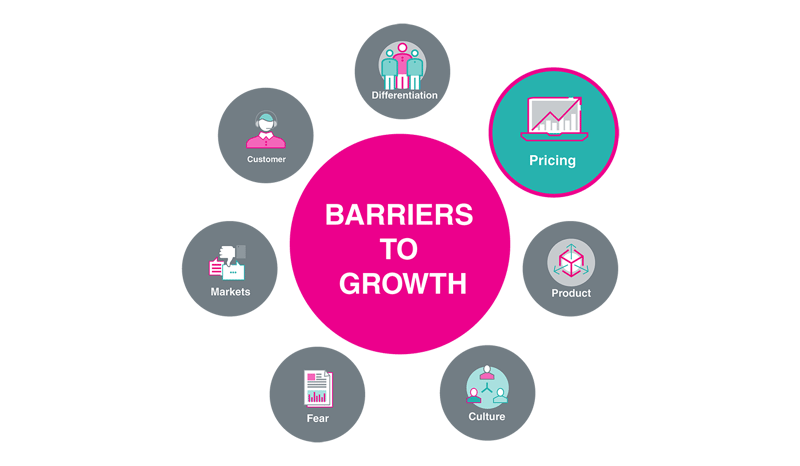Account-Based Marketing (ABM) has been a proven strategy in mid- to large-sized businesses for years. However, when considering its implementation in smaller businesses, the concept can often raise eyebrows. The idea of dedicating significant time and resources to target a select few high-value accounts can seem counterintuitive, especially for those accustomed to broader marketing approaches. While ABM presents unique challenges, particularly for businesses where every penny and minute counts, when executed correctly, the results can be impressive.
Overcoming the Challenges of ABM
Account-Based Marketing (ABM) has been a proven strategy in mid- to large-sized businesses for years. However, when considering its implementation in smaller businesses, the concept can often raise eyebrows. The idea of dedicating significant time and resources to target a select few high-value accounts can seem counterintuitive, especially for those accustomed to broader marketing approaches. While ABM presents unique challenges, particularly for businesses where every penny and minute counts, when executed correctly, the results can be impressive.
"When I first introduced ABM to a smaller business, the Sales Director was sceptical about focusing on just a few accounts, having always gone wide to attract leads. It’s a common reaction, especially in businesses used to volume-based strategies. But once we personalised our approach for high-value accounts, he saw how deeper engagement led to quicker conversions and longer-term relationships. The key takeaway for me was that ABM doesn’t shrink your opportunities; it amplifies them by focusing on the right ones."
Overcoming the Challenges of ABM
One of the primary challenges when introducing ABM is pushback from sales teams and leadership. In smaller businesses, where resources are already stretched thin, the idea of investing heavily in a strategy that focuses on fewer leads may feel risky. For many, the shift from prioritizing lead quantity to lead quality can take time to fully grasp.
Effective communication about the long-term benefits of ABM is key. While it may not deliver immediate, high-volume results, the strategy is designed to build deeper, more profitable relationships with key accounts. This approach aligns both sales and marketing teams, fostering stronger collaboration and driving better results in the long term.
"When I first pitch ABM, I often encounter teams stuck in the familiar - comfortable with the same cycle, the same methods. Jumping into a new strategy can feel like a leap of faith, and trust is key. Some clients are ready to embrace change right away, which is why they brought me in. They want to tackle the challenge head-on. But for others, even though they seek fresh ideas, there’s not always full team alignment. When I sense resistance, especially from sales, I take a phased approach. Instead of pushing ABM in full force, I start small - targeting a select group of accounts while letting broader campaigns run in parallel. Once the team sees early results, especially the ‘challenger’ within, it becomes much easier to bring everyone on board and shift to a fully targeted strategy."
Taking the Time to Get ABM Right
Another challenge is the time investment required for ABM. Unlike more traditional marketing strategies, ABM involves detailed research, personalised content creation, and ongoing collaboration between teams. This can be a daunting task in fast-paced business environments where quick results are often expected.
However, investing time upfront in understanding target accounts’ specific needs and challenges pays off in the long run. Tailored campaigns tend to resonate more deeply, leading to stronger relationships, higher conversion rates, and increased customer lifetime value (CLV).
"ABM isn’t a quick fix. It requires time, energy, and constant reviews of what’s working and what’s not. You’ll need to make adjustments along the way, even incorporating direct feedback from potential clients. Often, prospective clients enjoy that you’re taking a personal interest in their business, getting to know them and their specific challenges.”
ABM also fosters a collaborative culture within a business. When marketing and sales teams work together on ABM strategies, it strengthens their alignment around customer needs, which is crucial for delivering exceptional customer experiences.
“ABM isn’t done in isolation. It’s essential to ensure alignment upfront with the MD, marketing, sales, and even the operational head if needed. When everyone is aligned on the key ABM objectives and the set of clients being targeted, it drives deeper collaboration and better results. Done right, this approach builds trust, increases conversions, and boosts customer lifetime value (CLV)."
Measuring ABM Success: The Right KPIs
Measuring the success of ABM can be tricky. Traditional marketing metrics such as lead volume don’t apply, so it's important to focus on key performance indicators (KPIs) that reflect the real impact of your ABM efforts.
Here are the top KPIs to track in ABM:
- Customer Lifetime Value (CLV): A crucial metric for measuring the long-term revenue potential of targeted accounts. A focus on increasing CLV ensures that ABM efforts are contributing to sustained growth.
- Account Engagement: These metric track how engaged key accounts are with your content and communications. High engagement levels suggest your strategy is resonating with the right people.
- Pipeline Velocity: Measures how quickly accounts progress through the sales pipeline. Faster pipeline velocity indicates that ABM efforts are addressing the needs of your target accounts effectively.
- Conversion Rate: While overall lead volume might decrease, the conversion rate should rise. Tracking the percentage of targeted accounts that convert into customers is a key measure of ABM success.
- ROI on ABM Campaigns: Given the investment required, tracking return on investment (ROI) is essential. This includes financial ROI as well as the overall impact on relationships and brand perception.
- Win Rate: Win rate tracks the percentage of targeted accounts that successfully convert into customers, offering a clear measure of ABM success. Since ABM targets high-value accounts, a higher win rate reflects the effectiveness of your personalized approach in driving deals to closure.
- Average Deal Size: This metric measures the typical value of deals closed with target accounts. ABM often leads to larger deal sizes due to its focus on key, high-value relationships, making this a crucial indicator of the financial impact of your strategy.
"Pipeline velocity has been one of the most insightful metrics I’ve used to measure the success of an ABM strategy. It reveals how quickly target accounts are progressing through the sales funnel, providing a clear indication of whether the approach is effectively addressing their needs. When I see an increase in velocity, I know the strategy is resonating, and we’re speeding up the path to conversion."
Top 5 Challenges of ABM and How to Address Them
|
Challenge |
How to Address It |
|
Initial Pushback from Sales/Leaders |
Communicate the long-term benefits and align goals with key stakeholders – ALWAYS! |
|
High Upfront Investment |
Start small with a pilot ABM campaign targeting a few key accounts to demonstrate ROI. |
|
Time-Consuming Setup |
Invest time in thorough research and planning to avoid costly mistakes later. Ensure client understands this step is necessary! |
|
Complex Collaboration |
Encourage regular communication and collaboration between marketing, sales and in some cases, operational team leaders. |
|
Measuring Success |
Define clear KPIs from the start to track progress and adjust strategies as needed – it’s never too late to change! |
Top 5 Benefits of ABM and How to Achieve Them
|
Benefit |
How to Achieve It |
|
Increased Customer Lifetime Value |
Focus on building long-term relationships through personalised interactions. |
|
Higher Conversion Rates |
Tailor marketing efforts to meet the specific needs of target accounts – get to know the in’s and outs of every client! |
|
Stronger Sales and Marketing Alignment |
Foster joint strategy sessions and shared objectives between teams – weekly or bi-weekly team meetings scheduled upfront. |
|
Better ROI |
Regularly track and optimise campaigns based on relevant KPIs and feedback. |
|
Improved Customer Experience |
Ensure consistent, personalised messaging across all touchpoints! Stand out but speak their language! |
"At the end of the day, customers are people too, and we want them to feel that personal connection with the brand. The goal of ABM is to create a unique and tailored experience—one where high-value clients can see the time, effort, and confidence we’ve invested in meeting their needs. A positive customer experience should not only resonate; it should drive key metrics like pipeline velocity and, ultimately, lifetime value. When a customer feels truly understood, that’s when ABM delivers its greatest success."
Conclusion
Implementing ABM in smaller businesses comes with its challenges, particularly when it comes to initial resistance from sales teams and leadership. However, when approached with clear communication, the benefits of ABM become clear. The long-term value in deepening relationships with key accounts, improving alignment between teams, and driving sustainable business growth makes the effort worthwhile.
"For small businesses, where time and resources are precious, ABM might seem like a daunting shift at first. It requires patience and persistence, but the results are worth the pursuit. By focusing on deepening relationships with key accounts and aligning sales and marketing teams, ABM can drive sustainable growth. It’s not about having a massive budget; it’s about smart, targeted efforts. With the right KPIs, clear communication, and a phased approach, ABM can truly transform how a small business engages with its most valuable clients."
By focusing on the right KPIs, starting small with pilot programs, and fostering collaboration across departments, ABM can transform a business's approach to marketing and customer engagement.



